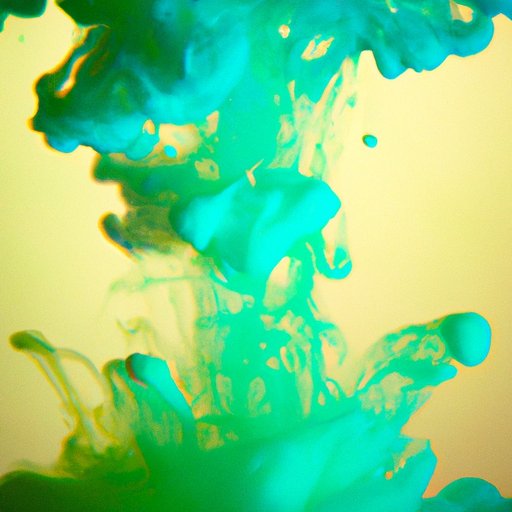
Is Color a Physical or Chemical Property?
Color is something that we encounter every day, yet it can be confusing to determine whether it is a physical or chemical property. In this article, we will explore the basics of physical and chemical properties, delve into the science behind pigments and color perception, discuss the physical properties of light, and examine how chemical reactions can affect color. By the end of this article, we will have a clear answer to the question of whether color is a physical or chemical property, as well as a better understanding of the significance of color in daily life.
Basics of Physical Properties
Physical properties are defined as characteristics that can be observed or measured without changing the composition of a substance. Examples of physical properties include density, melting point, boiling point, and of course, color.
Physical properties differ from chemical properties, which describe how a substance interacts with other substances or undergoes a chemical change. For example, flammability is a chemical property because it describes how a substance reacts with oxygen to produce a flame.
So, where does color fit into this? Color is typically considered a physical property because it can be observed and measured without changing the chemical composition of an object. However, as we will see, the creation of color often involves chemical processes.
Physical and Chemical Properties of Pigments
Pigments are substances that provide color by absorbing certain wavelengths of light and reflecting others. The specific color of a pigment is determined by the wavelengths of light it reflects, which is dependent on its chemical composition.
While pigments act as physical properties in that they can be observed visually, they can also be affected by chemical reactions. For example, exposure to sunlight can cause pigments in paint to fade over time, which is a chemical change that alters the physical properties of the paint.
Science behind Color Perception
The human eye perceives color through a complex series of physical and chemical processes. When light enters the eye, it passes through the cornea and lens before being focused on the retina at the back of the eye. The retina contains cells called photoreceptors, which are responsible for converting light into electrical signals that can be processed by the brain.
There are two types of photoreceptor cells: rods and cones. Rods are responsible for detecting brightness and contrast, while cones are responsible for detecting color. There are three types of cones, each of which responds to a different range of wavelengths of light: red, green, and blue.
Our perception of color is not just dependent on pigments; it is also heavily influenced by our brain’s interpretation of the signals received from the photoreceptor cells. This is why color perception can be affected by factors like lighting conditions and context.
Color in Light and Its Properties
The color of an object is determined by the wavelengths of light it reflects. All colors of light are part of the electromagnetic spectrum, which encompasses a range of wavelengths from radio waves to gamma rays.
The visible portion of the electromagnetic spectrum ranges from approximately 400 to 700 nanometers in wavelength. Colors at the red end of the visible spectrum have longer wavelengths and lower frequencies, while colors at the violet end have shorter wavelengths and higher frequencies.
The physical properties of light play a large role in how we perceive color. For example, the color of an object can appear different depending on the angle and intensity of the light reflecting off of it. Understanding the physical properties of light is crucial for industries like photography and design, where color accuracy is paramount.
Chemical Reactions and Their Effect on Color Change
Chemical reactions can alter the physical properties of an object and potentially change its color. For example, rusting occurs when iron reacts with oxygen in the presence of water, forming iron oxide. Iron oxide has a different chemical composition than iron and appears as a reddish-brown color.
Color can also be used as an indicator of chemical change. For example, litmus paper turns red in the presence of an acid and blue in the presence of a base. This is because the chemical reactions that occur when an acid or base is present affect the pigments in the litmus paper.
Chemical reactions that alter color can have practical applications in fields like chemistry and biology. In medicine, for example, color-changing indicators are often used to test for the presence of specific substances in bodily fluids.
Conclusion
After exploring the basics of physical and chemical properties, the science behind pigments and color perception, the physical properties of light, and the effect of chemical reactions on color, we can conclude that color is a physical property that can be affected by chemical reactions. Understanding the physical and chemical properties of color is important in a variety of fields, from art and design to medicine and chemistry.





